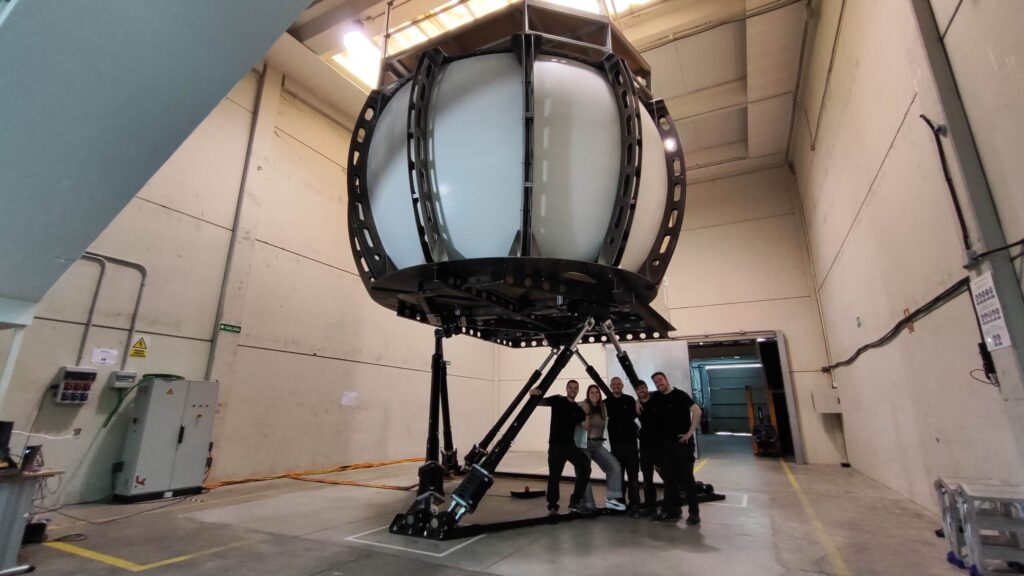In the world of aviation training, the acquisition of a Full Flight Simulator (FFS) represents a significant financial decision. It’s easy to view it as a major capital expenditure, a line item on a budget. But this perspective overlooks the bigger picture. A high-fidelity FFS is not a cost; it is a strategic asset with a clear and compelling return on investment (ROI).

Viewing an FFS solely through the lens of its initial price is like judging an aircraft by its paint job. The real value lies in its operational efficiency, its ability to generate revenue, and its transformative impact on pilot performance. Let’s break down the business case for realism and see how an FFS turns expenses into a high-performing investment.
The FFS Investment: at a Glance
- Return on Investment (ROI): as fast as 2-3 years by combining internal use with selling training hours.
- Operational Lifespan: 10-15 years.
- Key Savings: drastic reduction in fuel, maintenance, and insurance costs.
- Revenue Generation: new business lines through dry/wet lease hours.
Beyond a replica: the FFS as a strategic training cornerstone
At its core, a Full Flight Simulator is the pinnacle of realism in aviation training. It is a 1:1 replica of an aircraft cockpit, complete with motion and visual systems so advanced that the hours flown are logged as if in the real aircraft. This provides a completely safe, controlled, and repeatable environment to practice not just standard procedures, but also high-risk emergencies that are impossible to replicate in the air. This foundational benefit is the starting point for its impressive financial return.
From cost center to profit center: the financial returns of an FFS
The true ROI of a Full Flight Simulator becomes evident when you analyze its impact on your operational budget and revenue potential. With a typical lifespan of 10-15 years, the financial benefits accumulate year after year.
- Drastically Reduced Aircraft Downtime: every hour a pilot trains in the FFS is an hour your real aircraft is available for revenue-generating activities like charter flights or scheduled routes. You stop losing money on training flights and start maximizing the operational capacity of your fleet.
- Massive Operational Savings: the hourly cost of operating an FFS is a fraction of flying a real aircraft. The savings on fuel, maintenance, spare parts, and insurance are immediate and substantial, directly reducing your operational expenditure (OPEX).
- Creation of New Revenue Streams: an FFS is a business unit in itself. You can offer training hours to other airlines, flight schools, or individual pilots on a “wet lease” (with an instructor) or “dry lease” (simulator only) basis. This turns your training department into a profit center.
- Higher Quality, More Efficient Training: the realism of an FFS allows instructors to focus on specific skills with a level of precision impossible in a real aircraft. Maneuvers can be repeated instantly, paused for instruction, and debriefed with data, accelerating the learning curve and producing more proficient pilots in less time.
- A Clear ROI Timeline: while the exact timeframe varies for each operator depending on factors like their volume of internal pilot training, a rapid ROI is a key feature of the FFS. Many operators who may not achieve a return solely with internal training accelerate this process significantly by turning the simulator into a revenue source, selling surplus hours to third parties. Through this blended model, achieving a full return on investment in as little as 2-3 years becomes a realistic goal, leaving 10+ years of its operational life to generate pure profit and savings.
Deconstructing the investment: a transparent look at FFS costs
To appreciate the return, it’s essential to understand the investment. The costs associated with an FFS can be broken down into two clear categories:
- Initial Investment (CAPEX): This is the primary cost of acquiring and installing the simulator. At entrol, we see this not as a purchase, but as a long-term partnership. We work with you to ensure the device perfectly matches your training needs.
- Low Recurring Costs (OPEX): This is where the efficiency of an FFS truly shines.
- Maintenance: Our philosophy is to empower your team. We provide comprehensive training so your technicians can handle most maintenance tasks in-house, drastically reducing long-term costs and dependency on external providers. This is backed by our direct, reliable support.
- Electricity: Modern full flight simulators are designed for energy efficiency, with a surprisingly low power consumption that has a minimal impact on your facility’s operational costs.
- Facilities: The simulator requires a dedicated space, but this is a one-time setup for an asset that will serve your operation for over a decade.
The final verdict: a strategic asset for performance and profit
At entrol, we don’t just build simulators; we build the foundations for safer, more profitable training operations. When you weigh the initial investment against more than a decade of operational savings, new revenue streams, and unparalleled training benefits, the conclusion is clear. The cost of an FFS is significantly lower than the long-term cost of training exclusively in an aircraft.

The ultimate ROI goes beyond the balance sheet. It’s in the confidence of your pilots, who will be better prepared for any eventuality. A Full Flight Simulator is not just a financially sound decision; it’s a fundamental investment in safety, quality, and performance.
Are you ready to transform your training model and invest in performance? Discover our range of certified full flight simulators and contact our team for a personalized ROI analysis.



